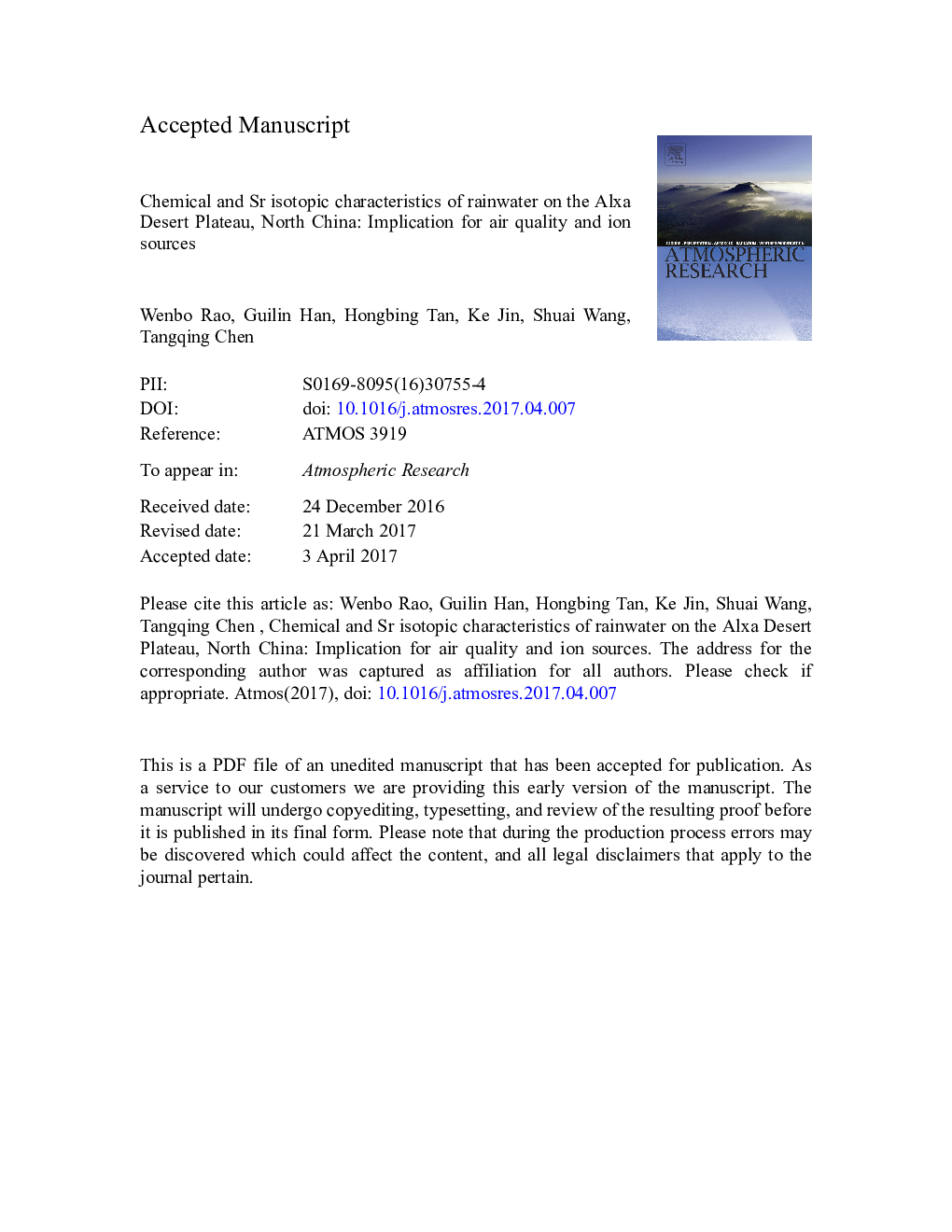| Article ID | Journal | Published Year | Pages | File Type |
|---|---|---|---|---|
| 5753644 | Atmospheric Research | 2017 | 41 Pages |
Abstract
The major ions and Sr isotopes in rainwater have been studied during 2013-2015 on the Alxa Desert Plateau in order to identify the source of rainwater chemistry and to assess air quality in the desert area of northern China. The pH and EC values of rainwater vary from 6.7 to 8.1 and from 35 to 1237 μS cmâ 1, respectively, at the two meteorological stations (AYQ and YBL) in the Alxa Desert Plateau. Ca2 +, SO42 â, Na+ and Clâ are the dominant ions in rainwater, possessing > 85% of total ions. The mean daily wet deposition fluxes of soluble ions are 8709 μeq/m2/d at YBL and 5459 μeq/m2/d at AYQ, approaching the values at Xi'an, Beijing, Guangzhou, and Chengdu. Statistical analysis shows that SO42 â and NO3â in rainwater were mainly from anthropogenic sources while Ca2 + and K+ originated from terrestrial sources. Clâ was mainly from seawater sources, and Na+ was partly from mineral weathering. Major ions are well correlated with each other in rainwater, revealing that substances of various origins were synchronously carried into the atmosphere by wind. By using Sr isotope techniques, three main end-members controlling base cations of rainwater are identified: silicates, carbonates and seawater. Based on the analyses of acid-soluble fractions of desert soils, local soil dust could be the most important source of base cations in rainwater whereas the effect of the anthropogenic sources could be neglected.
Related Topics
Physical Sciences and Engineering
Earth and Planetary Sciences
Atmospheric Science
Authors
Wenbo Rao, Guilin Han, Hongbing Tan, Ke Jin, Shuai Wang, Tangqing Chen,
